5ª Biennial 2001
The city of Cantù, well known all over the world for the quality of its handicraft, whether this be its famous furniture or its precious lace, is happy to host again this year the International Lace Biennial.
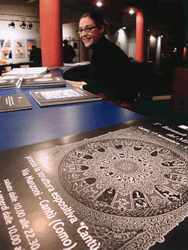
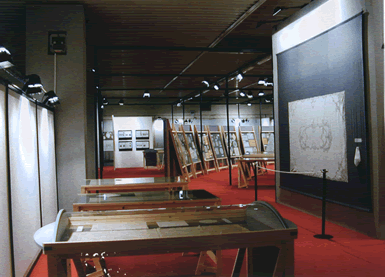
The artefacts exhibited in the 5th edition of the International Lace Biennial all belong to the category of table dressing. Thus we find, mostly, tablecloths, napkins, inserts and any other items which contribute to making the table precious and elegant. The period of manufacture of the lace exhibited ranges from 1800 to the present. In any case more ancient production will be documented with a historical reconstruction by means of paintings or reproductions of paintings showing tablecloths, accompanied by examples of the lace shown.
Particular emphasis will be laid on the production typical of the Cantù area and of Brianza. Although very few examples have come down to us, we know that since the end of the fifteenth century the habit of decorating tablecloths with linen bobbin or needle lace was widespread, as is shown in the inventories of houses and churches.
With the help of contemporary paintings it is possible to get an image of these tablecloths, which painters often inserted into their compositions describing the details with great attention: they were refined and with meticulous attention to detail, highlighting artefacts which are true jewels in thread, light webs, a play of flowers and sprays, chiaroscuro all skilfully created by the lacemakers’ expert hands.
Initially present on the edges or as small-sized inserts, from the seventeenth century onward lace assumes an increasingly dominant role until by the end of the nineteenth century it is the sole protagonist of tablecloths, created entirely by needle or bobbin.
This theme, which in Italy has never been dealt with in exhibitions or in specific publications, is therefore suitable to offer a contribution to the study of the art of lace, which has its roots in Italian handicraft production, in particular in Cantù, and at the same time is an unprecedented occasion for the public to acquire knowledge of an undiscovered area.
THE EXHIBITORS
This year’s edition sees the exhibition space distinctly expanded. The prestigious site “Cantù è” in fact offers more than 2,000 square metres, at the disposal of more than 23 stands which will host craftsmen, manufacturers, schools: all those whose work is closely linked to the world of lace.
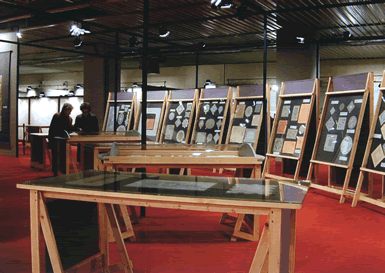
The public will also find, besides the Exhibition itself, a series of explanatory materials relating to the ancient art of pillow lace, and will enter an environment which favours the discovery of all the stages, design and manual work, of the creation of bobbin lace. The competence and demands of the numerous visitors who have attended previous editions of this event drive all those involved in the organization to a continuous search for improvement and a constitutes an open challenge to offer a product which comes up to the reputation of the event and the expectations of visitors.
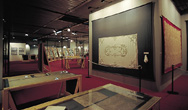
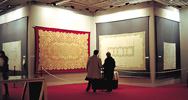
To coincide with the International Lace Biennial, in the exhibition space at “Cantù è”, the 4th Edition of the International Competition for Bobbin Lace Design will take place. This initiative was strongly desired by the Lace Promotion Committee to give a new drive and impulse to the creative and design phase of lace, and to its transfer to paper, important moments in the creation of lace.
The competition is open to individuals, groups, Italian or foreign who desire to create innovative proposals to consolidate or find new outlets or new professional and market environments which could enable Cantù lace to maintain unaltered the fame which it enjoys. The competition involves two categories: innovation and tradition, precisely because a future without solid roots cannot exist. The culture and traditions typical of our area constitute an important heritage which must not be neglected, but rather be examined in depth in order to offer the starting point for renewal which is sustainable in time, for an evolution which does not exhaust itself like a meteor.
THE PLACE
Cantù is situated on the northern edge of Western Brianza. The City is composed of various urban agglomerations: the city centre is surrounded by numerous hamlets and localities. The old name of Canturio, which became Cantù in the fifteenth century, derives from the Insubrian population of the Canturigi. The first inhabited settlement was however Galliano, the Gaulish origin of whose name is evident.
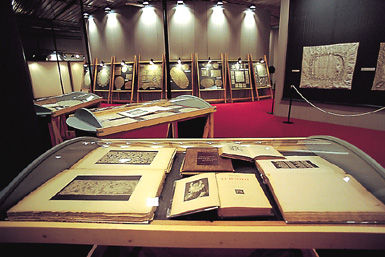
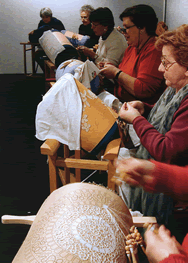
Expanded to include the historical settlements of the hills of St Paul and Galliano, Cantù, despite the growing urbanization after the Second World War, still preserves the structure of a medieval walled city. The monument of greatest artistic importance is the Romanesque complex of the basilica and baptistery of Galliano, one of the most important proto-Romanesque developments present in Lombardy.
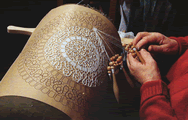
The most ancient part of Cantù, dating back to the tenth and eleventh centuries, lies around what is now Piazza Garibaldi. Here one may visit the churches of St Paul (late eleventh century), with the Madonnina chapel of the same date, St Theodore’s (1200) and nearby church of St Anthony, the chapel of St Francis (frescoed in 1400), traces of the fortifications of the Pietrasanta Castle, the Ferraia Gate, the churches on a central plan St Mary’s (16th century) and St Ambrose’s (1570) linked, respectively to the Benedictine and Augustinian convents, Villa Calvi (early 19th century) and, further out, the Sanctuary of the Madonna of Miracles (1554).


